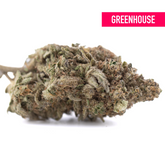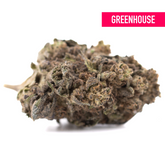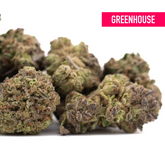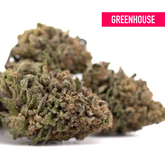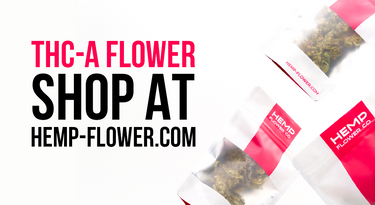High THCa Hemp Flower Explained: What Makes It So Potent?
Tetrahydrocannabinolic acid (THCa) hemp flower has taken the cannabis world by storm, appealing to consumers seeking unmatched potency, rich terpene profiles, and versatile consumption options. While traditional hemp flower boasts only trace amounts of Delta-9 THC, high THCa concentrates unlock a new realm of cannabinoid intensity—without necessarily crossing legal thresholds. But what exactly is high THCa hemp flower, and why does it pack such a punch? In this deep dive, we’ll unpack the science, cultivation practices, processing methods, and product formats that elevate THCa-rich hemp above the rest. Along the way, we’ll explore everything from hemp flower THCa genetics and indoor hemp flower techniques to bulk purchasing options like THCa bulk and affordable access via cheap THCa flower. We’ll also highlight specialty offerings—premium THCa flower, exotic indoor THCa flower—alongside concentrates, kief, and smalls to help you navigate this potent category with confidence.
Introduction: The Rise of THCa Hemp Flower
Cannabis enthusiasts have long chased high-THC experiences, but until recently, hemp-derived flower was limited to CBD-rich, non-intoxicating varieties. The 2018 Farm Bill’s legalization of hemp sparked innovation, leading breeders to develop cultivars naturally high in THCa, the acidic precursor to Delta-9 THC. Today’s high THCa hemp flower routinely tests above 25% THCa, approaching potency levels once reserved for marijuana in regulated markets.
This shift has opened new possibilities:
-
Versatile Consumption: Smoke or vape THCa flower for a strong psychoactive effect upon decarboxylation.
-
Medical Applications: Leverage THCa’s anti-inflammatory and neuroprotective properties in raw juice or tinctures.
-
Economic Access: Legally purchase potent flower in states without recreational cannabis programs.
In the sections that follow, we’ll dissect what makes THCa flower so potent—from its molecular structure to cultivation and processing techniques—and guide you through selecting, consuming, and storing your own high-THCa stash.
Understanding THCa: The Acidic Precursor
THCa (tetrahydrocannabinolic acid) is the non-psychoactive form of THC produced in the plant’s living trichomes. In its native state, THCa does not bind effectively to CB1 receptors in the human endocannabinoid system, meaning it won’t create a “high.” Instead, THCa has shown potential therapeutic benefits, including anti-inflammatory, neuroprotective, and antiemetic effects.
When you apply heat—through smoking, vaping, or decarbing at ~220°F—THCa undergoes decarboxylation, losing a carboxyl group (CO₂) to become Delta-9 THC, the compound associated with psychoactivity. The higher the THCa content in the raw bud, the more THC forms upon heating, resulting in a potent, immediate high.
Key distinctions:
-
THCa: Non-psychoactive in raw form; beneficial in juicing and raw tinctures.
-
Delta-9 THC: Psychoactive, forms after decarboxylation; concentration determines intensity.
Understanding this conversion is crucial when evaluating hemp flower THCa products and planning dosing strategies.
Genetics & Breeding: Crafting High-THCa Cultivars
The foundation of any high THCa hemp flower operation is robust genetics. Breeders identify and stabilize lines that naturally accumulate high levels of THCa, often crossing:
-
THCa-Rich Landraces: Rare strains with inherited capacity for high THCa production.
-
Elite Marijuana Cultivars: Crossing hemp with select marijuana phenotypes to boost THCa potential while retaining legal compliance.
-
Stability Lines: Multi-generational breeding ensures consistent expression of THCa traits, terpene profiles, and growth characteristics.
Cultivars like “Gelato #33” or “Cherry Wine” have been adapted into hemp varieties testing up to 30% THCa. These genetics also often carry robust terpene profiles that enhance both flavor and the entourage effect.
Cultivation Practices: From Seed to Flower
Growing superior THCa flower demands meticulous attention at every stage:
Indoor vs. Outdoor Growth
-
Indoor Hemp Flower
-
Offers total control: light spectrum (LED or HPS), temperature (68–78°F), humidity (40–60%), and CO₂ enrichment.
-
Enables multiple harvests per year and reduced pest exposure.
-
-
Outdoor Cultivation
-
Leverages natural sunlight; lower energy costs.
-
Seasonal yields and greater environmental variation can produce unique terpene profiles.
-
Many producers opt for exotic indoor THCa flower to maximize consistency and potency.
Nutrient & Soil Science
-
Organic Living Soils: Rich in microbial life to support healthy nutrient cycling and terpene synthesis.
-
Hydroponics & Soilless: Precise nutrient control but require careful pH and EC monitoring.
-
Foliar Feeds & Microbial Inoculants: Enhance nutrient uptake and disease resistance without harsh chemicals.
Balancing nitrogen, phosphorus, and potassium (N-P-K) ratios across veg and bloom phases is critical to optimizing flower yield and trichome density.
Environmental Controls
-
Light Cycles: 18/6 (veg) → 12/12 (flower) photoperiod to trigger and sustain robust bud formation.
-
Climate Management: Automated HVAC, dehumidifiers, and MERV-13 filtration to maintain ideal grow room conditions.
-
CO₂ Enrichment: Boosts photosynthesis and yield—levels around 1,200–1,500 ppm during peak light hours.
These tight controls yield resinous buds ideal for premium THCa flower offerings.
Harvest & Post-Harvest: Locking in Potency
Timing and technique at harvest can make or break a high-THCa crop:
-
Trichome Observation: Use a 60–100× loupe to assess gland head color—clear (immature), cloudy (peak THCa), and amber (degraded to CBN).
-
Staggered Harvest: Top colas often mature faster than lower bud sites—harvest in waves for uniform ripeness.
-
Immediate Drying: Transport cut branches to a dark, ventilated drying room with 60–65°F and 50–55% RH.
Drying & Curing: Preserving Potency & Terpenes
Proper post-harvest processes preserve THCa and terpenes:
-
Wet Trim vs. Dry Trim: Some prefer wet trimming to speed drying; others dry trim to protect trichomes.
-
Slow Dry: 7–14 days at controlled humidity avoids chlorophyll retention and harsh smoke.
-
Jar Curing: Cure in 1 L glass jars, burping daily for 2–8 weeks to enhance flavor, smoothness, and cannabinoid stability.
Well-cured flower delivers the full potency of high THCa hemp flower without rogue green flavors.
Processing THCa Flower: Smalls, Kief & Bulk
After curing, buds are processed into consumer and commercial formats:
THCa Flower Smalls
Small, untrimmed or popcorn buds sorted out of premium lots become THCa flower smalls—ideal for cost-conscious users who still demand high potency. Smalls often test just as high in THCa as large nugs but sell at discounted rates.
THCa Kief
Mechanical tumbling or sifting yields THCa kief—a fine powder of trichome heads containing concentrated THCa (up to 60–70%). Kief can be pressed into rosin or sprinkled onto joints for an extra kick.
THCa Bulk & Pounds
For extractors and heavy users, THCa bulk and THCa pounds deals offer value. Promotional rates like $100/lb THCa flower or THCa pounds $500 reflect economies of scale—just be sure to have proper storage for long-term potency preservation.
Premium vs. Cheap THCa Flower: What Sets Them Apart?
Not all high-THCa flower is created equal. Key differentiators:
-
Premium THCa Flower
-
Lab-tested >25% THCa, robust terpene profiles, hand-trimmed nugs, small-batch production, indoor cultivation.
-
-
Cheap THCa Flower
-
Often outdoor bulk runs or greenhouse grows, slightly lower average THCa (18–23%), machine-trimmed, larger lots.
-
Consumers must weigh budget against desired potency, aroma, and smoothness. Brands often reserve exotic, terpene-rich phenotypes for their premium THCa flower lines.
Exotic Indoor THCa Flower: The Luxury Tier
At the apex of THCa cultivation lies exotic indoor THCa flower—ultra-limited strains grown under hyper-optimized conditions:
-
Custom Light Recipes: Full-spectrum LED programs mimicking sun cycles for terpene perfection.
-
Micro-Climate Chambers: Individual booths with tailored temperature, humidity, and airflow per cultivar.
-
Hand-Selection: Clones chosen for exceptional trichome density and unique terpene ratios.
Exotic indoor offerings often retail at 2–3× standard flower prices, coveted by connoisseurs chasing rare, sensory-driven experiences.
Concentrates & Extracts: Beyond the Bud
While flower remains the foundation, THCa concentrate formats amplify potency:
THCa Wax
Soft, malleable extracts whipped under heat, THCa wax maintains high terpene levels and 70–90% THCa, perfect for dabbing or vaporizing.
THCa Dabs & Live Resin
-
Live Resin: Flash-frozen fresh flower preserves monoterpenes often lost in cured material, yielding potent, aromatic THCa dabs.
-
Diamonds & Sauce: Crystalline THCa surrounded by terpene-rich sauce for an intense, flavor-forward experience.
These are the pinnacle of concentrate culture—costly but unmatched in sensory depth.
Consumption Methods & Dosing
Choosing the right method ensures optimal effects:
-
Flower/Vaporization: Temperatures of 350–370°F maximize terpene preservation while fully decarbing THCa.
-
Dabbing: Quartz banger heated to 380–450°F; apply micro-dabs (~2–5 mg) under a carb cap for flavor and efficiency.
-
Edibles: Decarb at 220–240°F for 30–45 minutes, then infuse into fats for longer-lasting effects—dose cautiously due to delayed onset.
Start low—2 mg THCa equivalent for new users—and titrate upward based on tolerance and desired intensity.
Safety, Legality & Drug Testing Considerations
-
Legal Status: Hemp-derived THCa flower must test ≤0.3% Delta-9 THC. THCa itself is not a controlled substance federally, but total potential THC (THCa×0.877 + Δ⁹THC) must remain compliant.
-
Drug Tests: Because THCa converts to THC upon heating, consumption can lead to positive results for THC metabolites. However, raw THCa (juiced or tinctured without heat) is less likely to register.
-
Side Effects: Similar to THC—dry mouth, red eyes, increased appetite, possible anxiety at high doses.
Consumers subject to drug testing may prefer CBD-dominant products or isolates to avoid inadvertent positives.
Buying in Bulk: THCa Bulk & Wholesale Strategies
For heavy users and extractors, bulk purchasing options include:
-
THCa Bulk Bundles: 5–50 lb lots at deep discounts.
-
THCa Wholesale Programs: Tiered pricing for dispensaries and processors, marketing support, and flexible shipping.
-
Sampler Packs: Multi-pound “flavor flights” to test cultivars before committing to larger THCa pounds.
Negotiate terms—payment schedules, return policies, and COA guarantees—to secure reliable supply at competitive rates.
Conclusion: Embracing the Power of THCa Flower
The ascent of high THCa hemp flower marks a new era in cannabis, merging hemp’s legal accessibility with the potency once reserved for marijuana. From meticulously bred genetics and precision indoor hemp flower cultivation to post-harvest artistry and innovative concentrate formats like THCa kief and THCa flower smalls, every step contributes to the final product’s unmatched strength and flavor.
Whether you’re exploring cheap THCa flower for daily enjoyment, savoring premium THCa flower in small batches, or securing bulk THCa flower deals, knowledge is your greatest ally. By understanding the science behind how THCa flower is made, the difference between Delta 9 and THCa, and best practices for consumption and storage, you’ll harness this compound’s full potential—legally, safely, and consistently.
Dive deeper into emerging strains, processing techniques, and market trends at our New THCa Releases page: https://hemp-flower.com/blogs/news. Your journey to discovering what makes THCa flower so potent starts here—explore, experiment, and elevate your hemp experience today!
